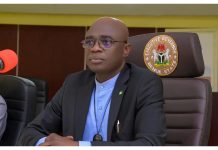Africa-Press – Zimbabwe. The public sector’s personnel expenditure review – which will culminate in a new remuneration policy for public servants – is currently on government’s agenda. The review, which started in February, will hopefully be finalised in March next year.
By the end of it, the government should understand better to what extent the money it spends on staff in different areas of the public sector benefits the country when it comes to delivering public services.
But it won’t just be about public services. Remuneration trends in the entire public sector, including state-owned entities (SOEs), Chapter Nine institutions and government agencies will all be under scrutiny. The government will also look at the Occupational Specific Dispensation (OSD), the perks that the state introduced in 2007 to keep and attract certain skills that were leaving the public sector.
“Why are we doing this? We want to manage the public sector wage bill better,” said Cornel Uys, chief director of remuneration, employment conditions and HR systems in the Department of Public Service and Administration.
He added that government also wants to eliminate disparities in the public sector.
“We all know that there are huge differences in salaries and conditions of service between the public service, local government and specifically public entities. We know that it’s an issue we need to control over time,” said Uys.
Executives at Eskom, SABC and Eskom earn multiples of what ministers and some deputy directors-general earn, as their salaries are often benchmarked against peers in the private sector.
Unions like the Public Servants’ Association of SA (PSA) and the National Education, Health and Allied Workers’ Union (Nehawu) aren’t happy that public service employees like nurses, police and teachers are getting multiples less.
On the other hand, managers in public services are also not happy that some of the professionals reporting to them earn more because of the OSD benefits. Uys said this has resulted in professionals not wanting to take up managerial posts and managers eyeing jobs in the field to earn better salaries.
The government has been in the process of reviewing the remuneration dispensation of public servants for a while. In 2007 it implemented the OSDs and decided to make the annual cost-of-living adjustments to public servants’ salaries.
In 2006 and 2011, the Department of Public Service and Administration did personnel expenditure reviews. And in 2018, there was a Presidential Remuneration Review Commission, which completed and handed over its report to Parliament in 2020.
Uys said, among other things, that report said there was a need for analysis of headcount and composition of public service personnel and address excessive levels of employment in non-core posts. It also singled out teachers’ salaries as one area that the government needs to look at urgently.
Pay should be linked to performance
But despite all these revisions, there are more unhappy employees, and government is struggling to contain the ballooning public sector wage bill.
Uys said the public sector needs a pay-progression system that is linked to performance. Previous remuneration policy reviews have also raised the issue of establishing measurable key performance areas for public servants, just like it’s done in the private sector.
On the OSD benefits, Uys said the government will also review these, but has no intentions of abolishing them. The government will also look at allowances and leave benefits.
The 2006 personnel expenditure review strongly recommended that the government simplify and review allowances. Currently, the myriad of allowances in the public sector, ranging from “circumstantial allowances”, “danger allowances”, travel allowances and more. Some compensate some government employees for the less-than-desirable circumstances under which they work.
Uys said some have claimed that there are more than 500 allowances that public servants can claim on the PERSAL system. The public services and administration department disputes this, but Uys said he doesn’t think anyone knows exactly how many allowances there are in the public sector. However, his department narrowed it down to 275.
The problem with these allowances is that they are being abused, and some aren’t needed anymore.
“In the 2012 … we found that a number of people across the public service are getting the danger allowance that should, strictly speaking, not be paid. At that stage, the cost associated with this was approximately R12 million per annum. It’s probably higher now,” said Uys.
On leave, Uys said any changes the department wants to make will be discussed with labour.
Get the biggest business stories
emailed to you every weekday.
Go to the
Fin24 front page.
For More News And Analysis About Zimbabwe Follow Africa-Press






